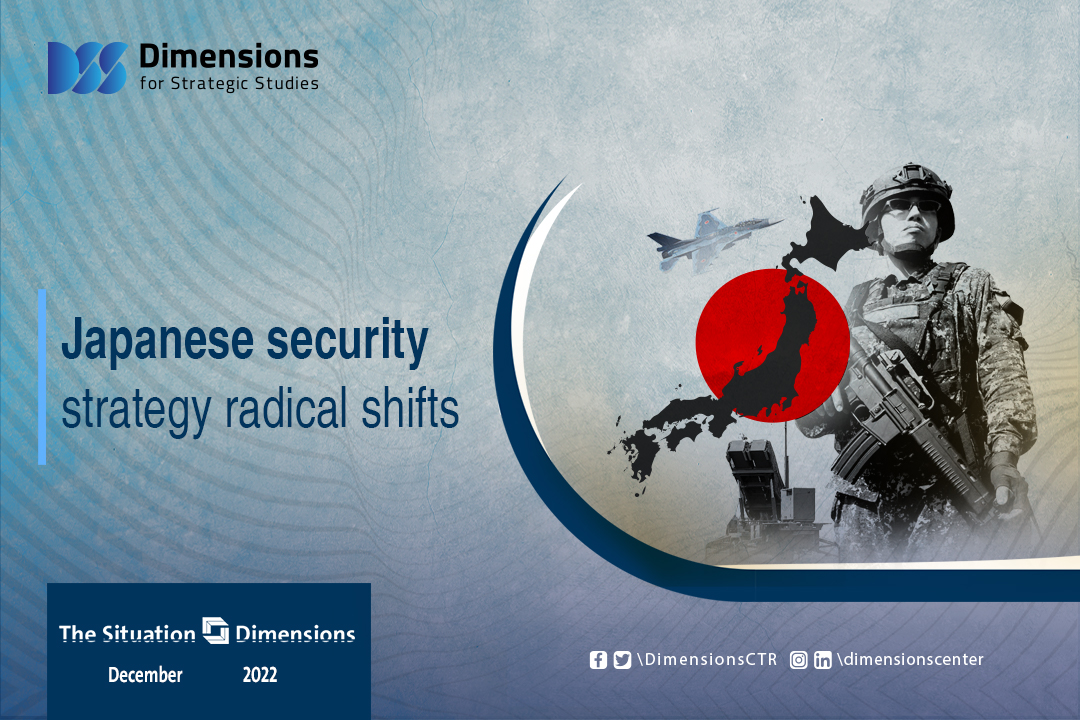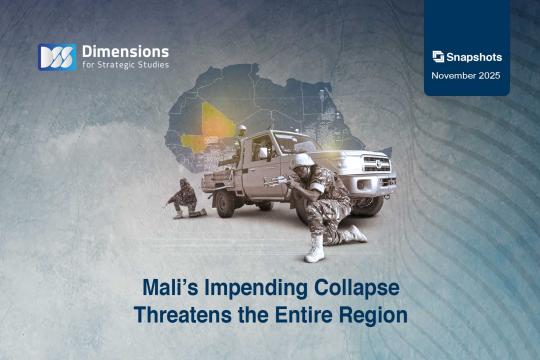
Japanese security strategy radical shifts
2022-12-271861 view
On December 16, 2022, Japan announced its new security strategy for the five years (2022-2027). The new strategy included a number of basic principles and pillars that witnessed fundamental changes from what prevailed in the Japanese security strategies since 1945.
Among the changes:
First; the allocation of an estimated budget of 300 billion euros for military spending over 5 years, which is an increase of 56% over the (2017-2022) strategy. The goal is possessing high capabilities to launch a counterattack with weapons able to target enemy missile launch sites. In this context comes the Japanese move to purchase 500 American Tomahawk missiles and long-range SM-6 cruise missiles.
Second; the deployment of more than a thousand long-range cruise missiles and the improvement of its Type 12 anti-ship missiles mounted on trucks, which were developed by the Japanese Mitsubishi Heavy Industries group, as well as the development of “hypersonic” (Mach 5) missiles that fly at a speed 5 times greater than the speed of sound. That’s in addition to building about 130 new ammunition depots on its territory by 2035 to accommodate "counter-attack" missiles and other weapons.
Third; strengthening the military presence in the southernmost islands, closest to Taiwan and mainland China, by doubling the units of the Self-Defense Forces equipped with ballistic missile interception capabilities, and increasing the number of its soldiers stationed in Okinawa at the southwestern tip of the archipelago, from two thousand to three thousand soldiers.
Fourth; placing the Japanese Land, Sea and Air Self-Defense Forces under a unified command in order to respond more quickly to emergencies, facilitating the army’s use of the country’s civilian ports and airports even in times of peace, establishing new specialized units of the Self-Defense Forces that are responsible for drones and electronic warfare, improving capabilities to collect information and respond to high-tech weapons such as flying bombs and hypersonic weapons, developing next-generation fighter aircraft by 2035 with the United Kingdom and Italy, and doubling the annual defense budget, which is currently about 1% of its gross domestic product, to 2% by 2027, in line with similar commitments made by NATO member states.
Fifth; officially listing the most prominent potential opponents who pose a future strategic threat to Japan. The list includes China, North Korea and Russia, as it states that China's military position is getting stronger and is a source of great concern to Japan and its stability. The Korean military actions; moreover, constitute a serious and imminent threat to Japan. The sense of Russia’s danger is increasingly felt , and it is also increasing. sense of danger from Russia; especially when it uses force to achieve its own security goals as its military activities in the Asia-Pacific region and its strategic cooperation with China are all matters of great concern to Japanese security.
Parallel to such Japanese fear, there is fear on the part of China reflected in Japan’s shift from its defensive approach observed since 1945 to adopting offensive policies and entering into military alliances that push towards the militarisation of Southeast Asia, especially in light of the strategic relations between Japan and the United States of America, and that the Japanese National Security Strategy 2022 is tantamount to A "geo-strategic" extension of the US National Security Strategy 2022.
Within the framework of these transformations, it can be said that the world is heading towards an all-out global war at an accelerated pace, in light of the militarisation and security policies that have come to dominate the orientations of most of the regional and international parties in the current international system.





